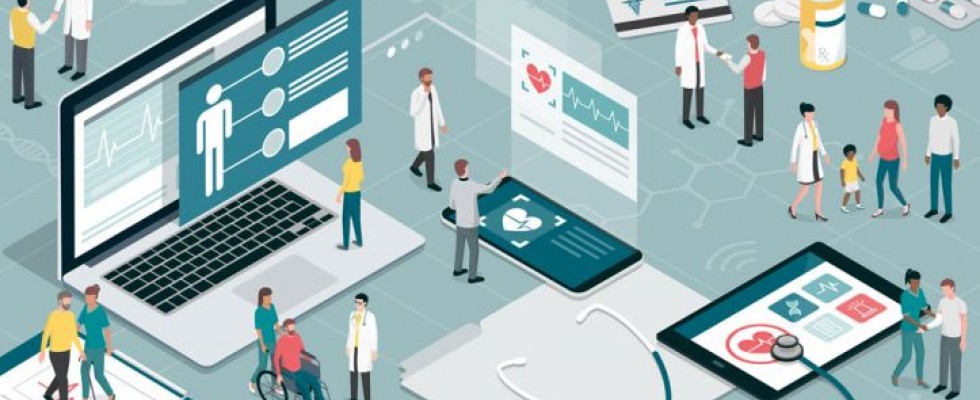
Remote patient monitoring (RPM), although still new, is becoming a frequent subject in the national health care conversation. However, there is still plenty of confusion about the topic. Remote patient monitoring has not been well defined. Remote monitoring may include, but is not limited to, self-reporting or automatic reporting of vital signs, such as heart rate, blood pressure, blood glucose, weight and other physiological statistics.
For a patient, the benefits of remote monitoring are tremendous. The ability to track the key health information of an at-risk patient, either recovering from acute care or in need of chronic care, defines a shift in personalized health care. Providers will be able to essentially “be there” with the patient when they cannot be in the home.
With RPM, providers are able to track certain risk factors of a patient and are alerted in real time when the risk of readmission or rapid decline in health is imminent. Intervention measures can take place before the patient reaches the point of having to call an ambulance.
In the future, providers will see not only real-time analytics, but also predictive analytics, in which a change in condition can predict a negative outcome. This type of information may allow for providers to take action that may prevent an emergency. How does this make financial sense for a provider?
There are currently several revenue opportunities for remote patient monitoring and services. Even the Centers for Medicare & Medicaid Services (CMS) has allowed for unbundled current procedural terminology (CPT) codes for Medicare reimbursement. The most notable code is CPT code 99091. The service is defined as the “collection and interpretation of physiologic data (e.g., ECG, blood pressure, glucose monitoring) digitally stored and/or transmitted by the patient and/or caregiver to the physician or other qualified health care professional, qualified by education, training, licensure/regulation (when applicable) requiring a minimum of 30 minutes of time.” This code became effective in 2018. The side bar reviews three additional RPM billing codes, new in 2019.
Now effective, these three new codes break down the patient monitoring process into more descriptive chunks:
- CPT code 99453: “Remote monitoring of physiologic parameter(s) (e.g., weight, blood pressure, pulse oximetry, respiratory flow rate), initial; setup and patient education on use of equipment.”
- CPT code 99454: “Remote monitoring of physiologic parameter(s) (e.g., weight, blood pressure, pulse oximetry, respiratory flow rate), initial; device(s) supply with daily recording(s) or programmed alert(s) transmission, each 30 days.”
- CPT code 99457: “Remote physiologic monitoring treatment management services, 20 minutes or more of clinical staff/physician/other qualified health care professional time in a calendar month requiring interactive communication with the patient/caregiver during the month.”
Reimbursement & Revenue
Medicare is the primary payer of RPM services at this point, but some states have implemented RPM reimbursements into the state Medicaid program. According to research by telehealth provider Chiron Health, 20 states have adopted some form of RPM reimbursement. Although Medicare and many Medicaid programs have adopted payment for RPM, it is unclear whether commercial payers will follow suit. As RPM proves savings and increased quality of care for patients, commercial payers will likely adopt. The 2019 Physician Fee Schedule from CMS has been finalized.
Although much of the discussion surrounds government payers, some agencies have already implemented billing private-pay clients for remote patient monitoring. As a value-add, agencies providing private-pay services, clients (or their families) can purchase monitoring services as an add-on to regular homecare or home health services.
To give you an idea of the potential revenue RPM services can provide, let’s use an example: An agency with a census of 500 patients decides to implement the new services and codes for remote monitoring. If all 500 patients utilized the services, that agency could increase revenue by nearly $750,000 in the first year. This includes the initial setup (CPT code 99453), monitoring transmission (CPT code 99454) and management services (CPT code 99457).
Future Expansion
As margins get compressed in home health and CMS seeks to decrease its spending, RPM is an area to watch closely. As technologies become more advanced, and as the benefits of remote monitoring are proven, the shift toward value-based care deepens and the importance of remote monitoring will increase. Not only can implementing RPM within an agency increase revenue, but it may also become a major component in quality of care throughout the care continuum.
Improving Outcomes
The end goal in remote patient monitoring is to improve outcomes and well-being of patients. The expected benefits of RPM are lower readmission rates, fewer emergency room (ER) visits and better medication adherence. In fact, one RPM device company, Carematix, states that RPM technologies can reduce ER visits by 60 percent, readmissions by 30 percent and increase pharmacy refills by 41 percent. These types of results can create an ecosystem of healthier patients and much lower health care costs from a payer standpoint.
